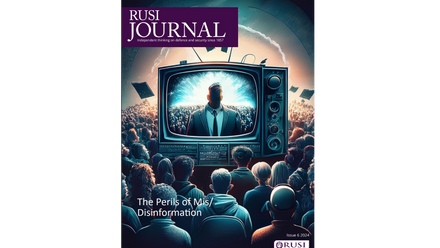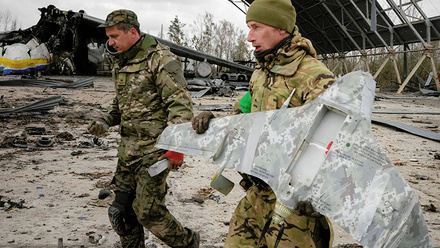Editor's Note
Living in a world with virtually unfettered access to information has an undoubtedly democratising effect, with more and more people able to access knowledge in real-time on nearly any topic – provided, of course, one lives in a democratic state, or has the technical or economic ability to circumvent the obstacles put in place by authoritarian regimes to restrict information. But the vastness of what is available, and the large amorphous galaxy of those producing and sharing this information, also means that processing and assessing its validity is a daunting task. This creates a fertile ground for actors who wish to influence or disrupt adversaries and undermine social stability. The problem of mis- and disinformation is well-known. Other characteristics of contemporary society – economic, social and psychological – compound the problem and make it all the harder to both define and tackle. The debate on the nature and spread of the phenomenon and how to counter it is likely to continue for the foreseeable future.
In this issue of the RUSI Journal, David V Gioe, Robin Brinkworth and Marina Miron suggest that the complexity of the issue requires a correspondingly multilayered approach, in which the customary focus on technological solutions must be complemented by a whole-of-society approach that builds critical thinking. The problem is complex precisely because it connects to other dynamics at play in our societies. For instance, much has been said about the loneliness epidemic spreading across the West, compounded by the ubiquitousness of the internet and social media, as well as today’s patterns of work and economic and community organisation. Albin Östervall and Charlotte Wagnsson explore how this creates a general vulnerability that hostile actors readily exploit in their influence campaigns.
New technologies are of course not limited to the ability to acquire and share information, and the RUSI Journal has often explored the implications the use of such technologies can have at the pointy end of conflict. Drones are one such technologies, and much has been said of their deployment in all sorts of functions, not least in the Russia–Ukraine war. Zachary Kallenborn and Marcel Plichta discuss how drone forensics is an increasingly important field, with multiple applications across law enforcement, national security and military operations. And often with new technology, it is the software rather than the hardware that offers the greatest opportunities: while this is often discussed in terms of AI and its potential for kinetic use, Stuart E Middleton, Daniel Leightley, Patrick Hinton, Sarah Ashbridge, Daniel A Adler, Alec Banks, Maria Liakata, Brant Chee and Ana Basiri take a closer look at how AI can be successfully deployed in the medical field, specifically to enhance mental health among serving members and veterans.
Yet another development has emerged in recent years in the security field – and has made headlines in relation to ongoing conflicts: illicit finance, originally linked to organised crime or the financing of terrorism. Yet, Maria Nizzero argues, there is an ongoing process of securitisation that increasingly identifies illicit finance as a threat in and of itself – with potential positive but also negative consequences, depending on how it is being embedded in the security discourse.
Finally, Lukas Milevski analyses NATO’s approach to the defence of the Baltic states, and argues that the tenets of manoeuvre warfare in which its doctrine is grounded are not the most suited to the strategic demands of defending the Baltics.
Dr Emma De Angelis
Editor, RUSI Journal









